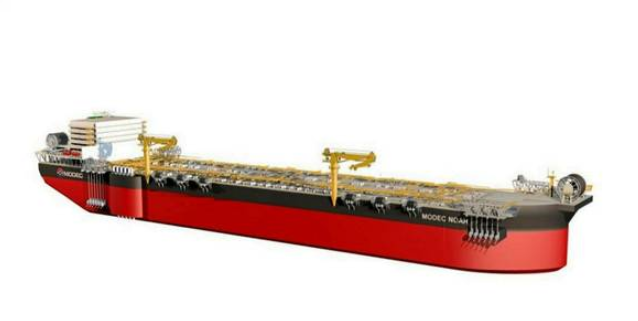
Japanese construction firm Modec has unveiled plans for two new models of floating production, storage and offloading (FPSO) vessels – Noah and M350.
In recent years, large FPSOs have mainly been converted from large crude carriers.
However, as a result of increases in required crude oil and gas production capacities, the topsides have become bigger and heavier, which has led to insufficient deck space area and insufficient crude oil storage capacity.
Additionally, the duration of client contracts is increasing, thereby requiring longer FPSO design lives. It is expected that there will be a heightened demand for new built FPSO hulls.
That’s why Modec joined forces with Mitsui E&S Shipbuilding to develop Noah with the aim of maximising the lifecycle value that each FPSO can provide – more than 20 years from the start until the end of operations.
Key features are:
o Adaptable to a wide range of shipyards around the world;
o Large deck area to cope with the trend toward larger, heavier and more complex topsides;
o Modular design concept, to accommodate a large variety of requirements for various FPSO projects, including various mooring configurations;
o Standardisation of fore/aft modules and the parallel-body module with adjustable lengths which can be separately constructed at different shipyards, thus significantly expanding the options for construction locations, as well as scheduling flexibility based on dock availability;
o Strategic unique hull form consisting of flat or 2-dimensional bending plates, which can reduce construction costs while maintaining seakeeping properties and minimising green water and slamming loads impact;
o Adoption of a unique design of the hull which enables a machinery room volume, beneficial changes for the functionality of the piping, and an improvement in safety of the living quarters;
o Adoption of a hull form that allows the storage tanks to be continuously inspected during stable ongoing operations by providing sufficient inspection accesses;
o Work efficient layout for adequate maintenance activities required in the long-term operations; and
o More comfortable living area for crew that takes into account their working environment and living environment.
Recommended for you

